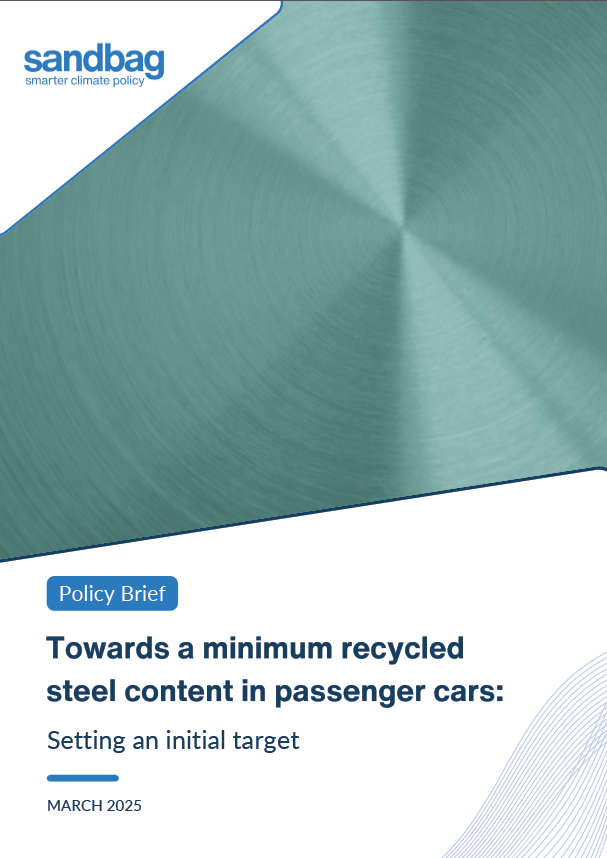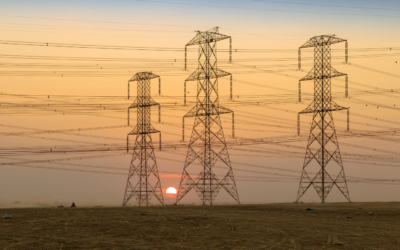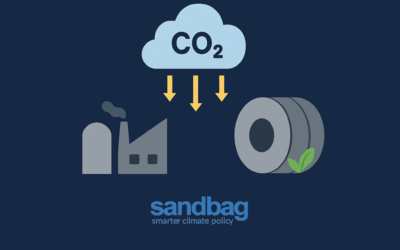The EU has around 286 million motor vehicles, and every year, 6.5 million of these are scrapped. If the steel scrap from these end-of-life vehicles (ELVs) is not managed well, valuable resources are lost, harming the environment.
With the EU preparing its ELV Regulation, which could set targets for minimum recycled steel content for passenger cars : what should those targets be?

About the policy brief
Despite a 90% overall steel recycling rate from ELVs, only 6% is reused for new car production. This analysis considers the environmental and safety challenges inherent in modern automotive steel design to propose a minimum recycled steel content target for passenger cars. It proposes clear and differentiated targets that could improve recycling practices in car production.
Key findings
Recycling targets should be specific for product categories rather than a single target for the whole car.
Internal Combustion Engine (ICE) vehicles and Electric Vehicles (EVs) use different amounts of long steel, which is easier to produce with high amounts of post-consumer scrap. Hence, a single target may have unintended consequences, such as increased fuel consumption.
Lightweighting strategies are important to consider.
High-Strength Steels (HSS) and Advanced High-Strength Steels (AHSS) enable vehicle structures that minimise the use of materials while maximising their strength and utility but have stringent quality requirements.
Limiting copper contamination is key to ease recycling.
The brief proposes solutions, including removing motors and electronics (e.g. sensors and wiring) during the dismantling phase before shredding.
Proposed targets can increase recycling.
The brief proposes differentiated targets: 5-10% post-consumer scrap for flat AHSS, 10-15% for flat carbon steel, and 70% for long AHSS.
To maximise circularity in car manufacturing, the quality requirements of each steel category should be considered, which requires separate targets for recycled steel material in passenger cars.
Read the full policy brief to learn more.
Photo by jplenio from pixabay
Related publications
New Principles for Steel Labelling: response to the consultation on the Industrial Decarbonisation Accelerator Act
Sandbag’s response to the EU’s Industrial Decarbonisation Accelerator Act sets out four principles to guide green steel labelling schemes, promoting credible standards based on lifecycle emissions and system-wide decarbonisation.
Getting Electrification Right: The broader challenge of induced emissions
Sandbag’s latest report explores how the climate impact of electricity use depends not just on how it’s generated, but also when and where it’s consumed. Using hydrogen as a case study, the report shows how poorly timed renewable electricity use can unintentionally drive-up fossil fuel emissions — and outlines smarter paths to decarbonisation.
Steel emissions standards under threat from flawed “mass balance” proposal
A joint letter from 30+ NGOs warns that coal-based steel could be falsely labelled as green under proposed “mass balance” rules. The signatories call for traceable, credible emissions data in steel standards.

Mundo Matogné. Rue d’Edimbourg 26, Ixelles 1050 Belgium. Sandbag is a not-for-profit (ASBL) organisation registered in Belgium under the number 0707.935.890. EU transparancy register no. 277895137794-73. VAT: BE277895137794-73



